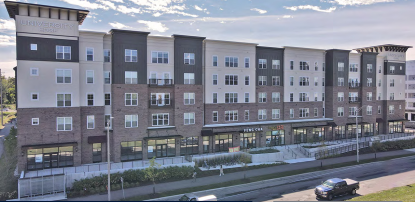Office and Retail Spaces Impacted by COVID-19
By Natalie Jones / 07.27.20 / 3 min read
Since the onset of COVID-19, real estate has moved into a period of substantial change. Even though the industry as a whole faces geographic and economic consequences, recent findings emphasize the pandemic’s hard hit on office and retail spaces.
How are office spaces affected?
The transition to remote work creates implications for office space as more companies evaluate the potential of making this a permanent switch for its employees. Twitter, Google, and Facebook announced long-term plans for an at-home work environment. Morgan Stanley, Barclays, and J.P Morgan Chase look into a geographically-distributed workforce.
Although tech firms and banks voice intentions that indicate a diminished need for office space, other companies are optimistic about a safe return to the pre-pandemic working environment.
Jeff Eckert, president of agency leasing with real estate services firm JLL, spoke to National Real Estate Investor, a company that reports real estate trends, about what this return would look like.
“‘We’re starting to see more offices across the country open up, and tenants’ feelings of safety will only continue to improve as time passes and a vaccine eventually arrives,’ Eckert says.”
According to Eckert, new technologies such as “touchless” access for buildings and elevators will facilitate the experience of integrating employees back to the office.
“‘I believe there will continue to be a certain level of (work) flexibility, but a balance from a human standpoint,’ Eckert says. ‘The setup in office buildings may look different with ‘de-densification’ of space, as employers add more space per person. Many companies large and small have built their culture on human interaction, and that will remain a key element of business.'”
Eckert thinks that modifying co-working spaces will be common among companies. The considerations for co-working spaces would show a step toward ensuring safety in the workplace.
How are retail spaces affected?
Additional changes in real estate space fall within the realm of retail. Moody Analytics, a company specializing in risk, performance, and financial modeling, predicts that retail rents nationwide will decline by 11% this year.
Multiple brands such as J.C. Penney, Neiman Marcus, and J. Crew filed for bankruptcy. These are the first of many anticipated retail closures to come in 2020.
Victor Calanog, head of commercial real estate economics at Moody’s Analytics, shares his insight on the pandemic’s effects on retail.
“Store closures have made it difficult for retail tenants to pay rent, which has negatively impacted landlords. It is not yet clear how effective government support will be in this sector,” said Calanog.
An estimated 15,000 store closures in 2020 and the subsequent increase in national retail vacancies present a time of uncertainty for these types of spaces.
“From store closures, hits to incomes and values, to the ambiguity surrounding who pays for rent relief, the future is bleak for retail properties,” said Calanog.
CoStar Group, a research firm, adds to these findings surrounding the hardships by revealing that annual retail rents will plummet by 13% in 2020. Their insight highlights a drop that is greater than the decline in the Great Recession of 2008.
As our country continues to work toward economic stability, office and retail spaces embrace a long road to recovery. The decisions surrounding the office work environment paired with changing retail rents and store closures create big adjustments that mold the future of real estate.
For more information about both office and retail spaces, check out the full articles: Retail Office











